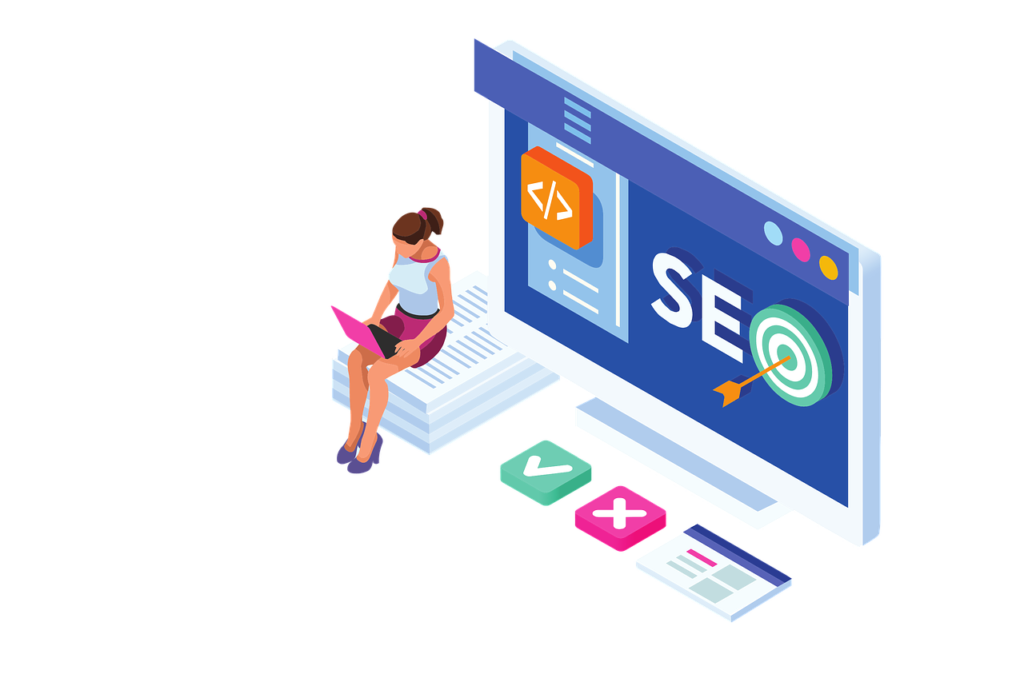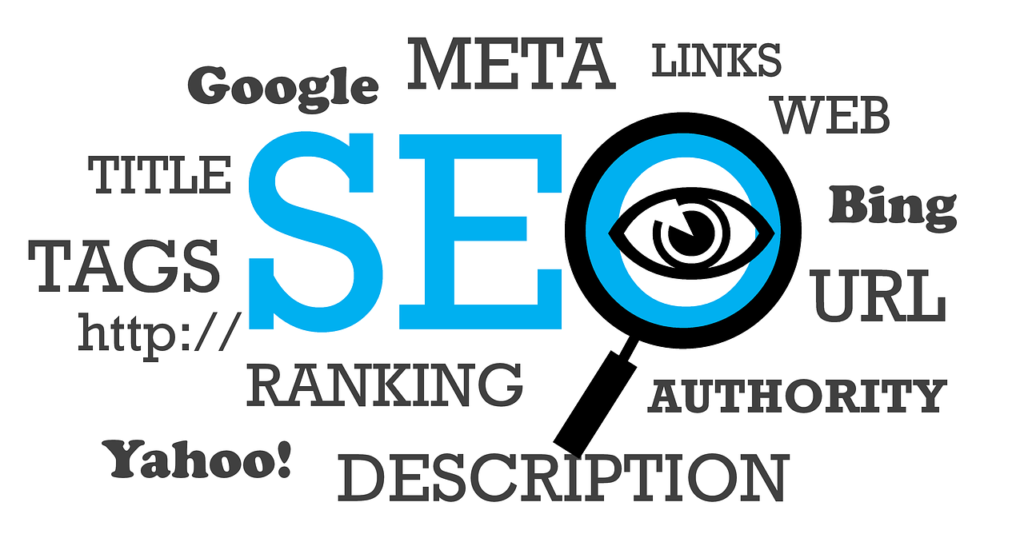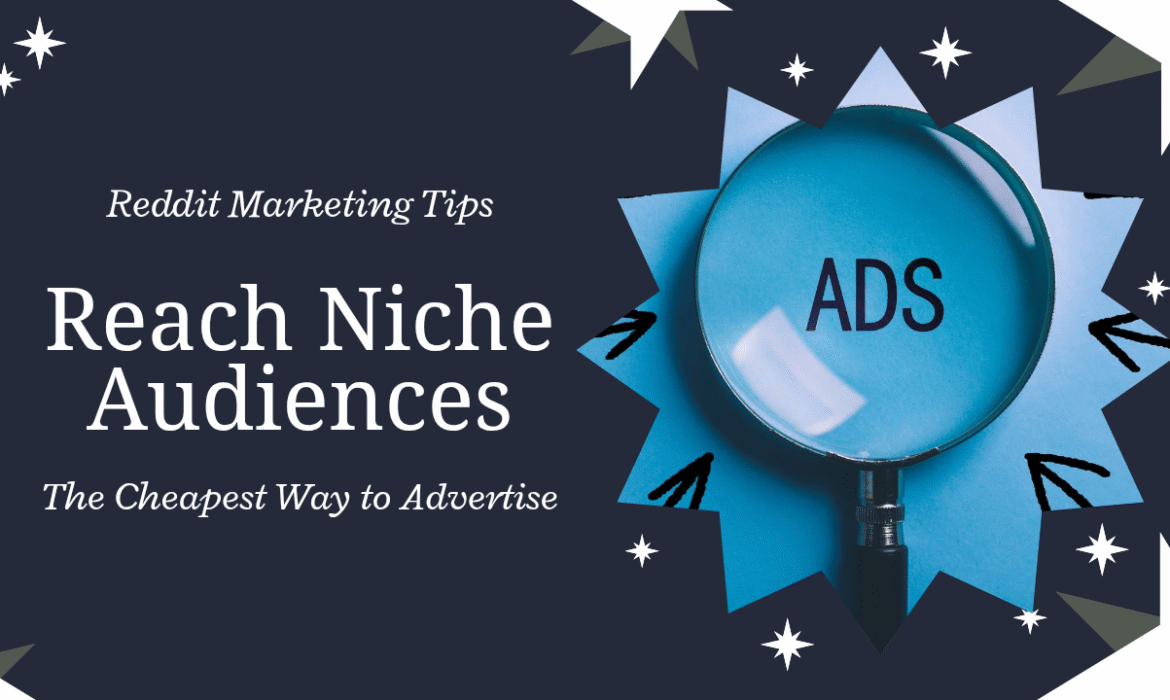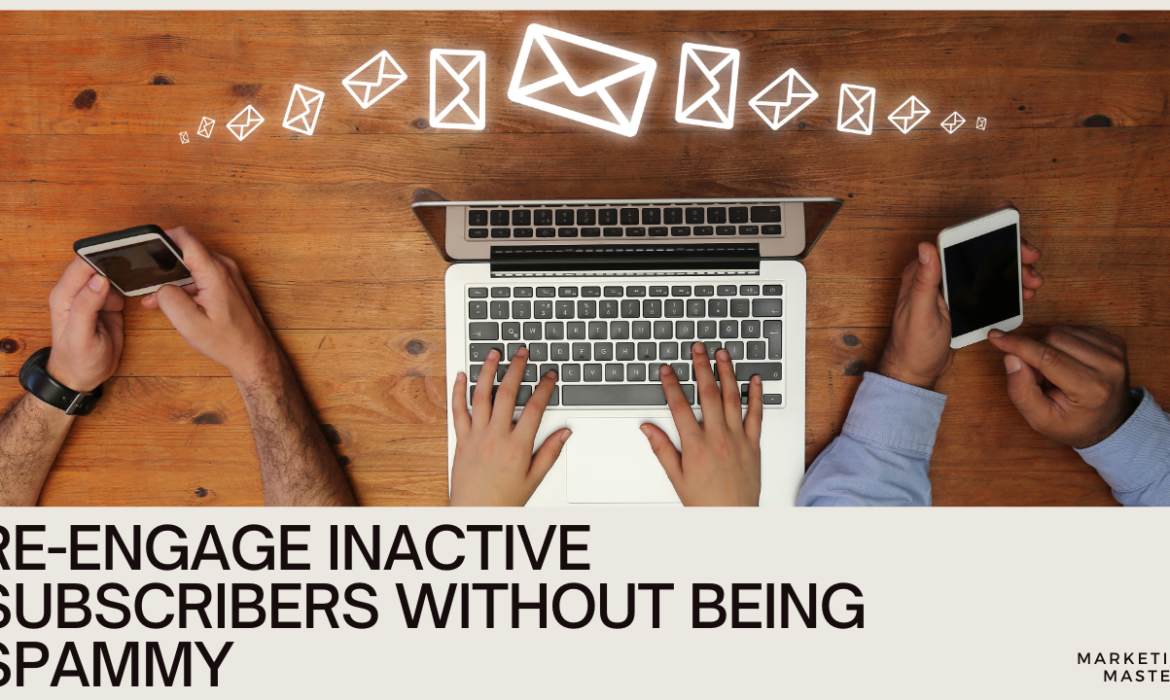081-4797-7173
Why YouTube SEO is the Untapped Traffic Goldmine
With over 2.5 billion monthly active users, YouTube is the second largest search engine in the world, right behind Google. Yet, many marketers and businesses overlook YouTube SEO, missing out on free, organic traffic that can bring long term value.
If you’re only focusing on Google SEO and ignoring YouTube, you’re leaving money on the table.
In this guide, we’ll dive into why YouTube SEO is a goldmine for traffic and how you can leverage it to grow your brand, generate leads, and increase revenue.
Why YouTube SEO Matters

1. Massive Audience Growth
Over 1 billion hours of video are watched daily on YouTube.YouTube is available in more than 100 countries and supports 80+ languages.The platform caters to all demographics, making it a powerful tool for businesses of all sizes.
2. Google Prioritizes YouTube Content
Google owns YouTube, which means videos rank highly in search results.Many search queries show video results before traditional blog posts.Optimized YouTube videos can outrank websites with written content.
3. Higher Engagement & Longer Watch Time
Video content is more engaging than text.People retain 95% of a message when watching a video, compared to just 10% from reading.A well optimized YouTube video can keep viewers on your content for longer, boosting rankings.
How to Optimize Your YouTube Videos for SEO

Step 1: Perform Keyword Research
Just like with Google SEO, keywords are the foundation of YouTube SEO. Here’s how to find the best keywords:
Use YouTube’s Search Suggest: Type a keyword into the search bar and note the suggestions.
Check Google Trends to see trending YouTube searches.
Use TubeBuddy or VidIQ to analyze competitors’ keywords.
Look at high ranking videos and identify their keywords in the title, description, and tags.
Pro Tip:
Target long tail keywords (e.g, “how to rank YouTube videos fast”) for less competition and higher chances of ranking.
Step 2: Optimize Video Titles for Click Through Rate (CTR)
Include your primary keyword in the title, Make it engaging and curiosity driven.
Keep it under 60 characters for better readability.
Example:
❌ SEO Tips for YouTube
✅ YouTube SEO: 5 Hacks to Rank #1 Fast.
Step 3: Write a Keyword Rich Description
The video description is one of the most important ranking factors.
Follow these tips:
- Include your main keyword within the first 25 words.
- Write at least 200 – 300 words for better optimization.
- Add timestamps to break down sections.
- Include links to your website or social media.
Example:
Bad Description: “Watch this video for SEO tips”
Good Description: “Want to rank your YouTube videos fast? In this video, I’ll show you 5 expert YouTube SEO strategies to optimize your titles, tags, and descriptions for higher rankings.”
Step 4: Use Eye Catching Thumbnails
A great thumbnail improves click through rates, which directly affects rankings.
Use bright colors and bold text.
Show emotion or action in the image.
Keep it consistent with your branding.
Pro Tip:
Thumbnails with faces and expressive reactions perform better than generic images.
Step 5: Leverage Tags and Hashtags
Use your main keyword as the first tag.
Include related keywords and variations.
Add trending hashtags like #YouTubeSEO #VideoMarketing.
Step 6: Encourage Engagement (Likes, Comments, Shares)
Ask a question at the end of your video to encourage comments.
Remind viewers to like, share, and subscribe.
Engage with your audience by replying to comments.
Pro Tip:
YouTube’s algorithm favors videos with high engagement, so actively interacting with your audience can boost rankings.
How to Track YouTube SEO Success
Use YouTube Analytics
Monitor key metrics to track video performance:Watch Time: Longer watch time = higher ranking.
Audience Retention: Shows how long people stay on your video.
CTR (Click Through Rate): A low CTR means you need better thumbnails and titles.
Traffic Sources: See where your viewers are coming from.
Use External Tools
VidIQ
Advanced video analytics.
TubeBuddy : Keyword optimization and rank tracking.
Google Search Console : Tracks video rankings on Google.
Final Thoughts:
Start Leveraging YouTube SEO Today, YouTube SEO is an untapped traffic goldmine that many businesses and marketers fail to take advantage of.
By optimizing your videos with the right keywords, engaging thumbnails, strong descriptions, and proper engagement strategies, you can drive massive organic traffic to your brand.
Quick Recap:
- Conduct keyword research for video topics.
- Optimize titles, descriptions, and tags for SEO.
- Design eye catching thumbnails to boost CTR.
- Encourage engagement to improve ranking.
- Track performance with YouTube Analytics. Don’t miss out on the power of YouTube SEO. Start implementing these strategies today and watch your traffic grow. Here’s your detailed blog post on “Why YouTube SEO is the Untapped Traffic Goldmine”.
10 Blog Post Ideas to Drive Traffic to Your Nigerian Blog
Growing a blog in Nigeria can be both exciting and challenging. With the increasing number of internet users and a vibrant digital community, the opportunities to reach your audience are endless. But to drive traffic consistently, you need to publish content that resonates with your target readers.
In this guide, we’ll explore 10 blog post ideas that can help Nigerian bloggers boost traffic, increase engagement, and build a loyal readership base. Each idea is tailored to suit the Nigerian context but can also appeal to a global audience when executed properly.
1. How To Guides Relevant to Local Needs
People search online for solutions to their everyday problems. Writing how to guides that address local challenges can drive massive traffic.
Examples:
- How to Register Your Business in Nigeria (Step by Step)
- How to Save Money as a Nigerian Student
- How to Apply for a Canadian Visa from Nigeria
These posts can rank well on Google and serve as evergreen content.
2. Local News + Your Take
Leverage trending news in Nigeria and provide your unique perspective. It sparks discussion and shares.
Examples:
- What the New Naira Policy Means for Small Business Owners
- Reactions to Fuel Subsidy Removal and How to Adapt
Use Twitter trends or Nairaland forums to find hot topics.
3. Listicles (Top 10, Best of, etc.)
List based articles are easy to skim, highly shareable, and tend to perform well.
Examples:
- 10 Best Side Hustles for Nigerians in 2025
- 7 Affordable Vacation Spots in Nigeria
- 5 Nigerian Tech Startups to Watch This Year
Use tools like BuzzSumo to analyze which listicles are trending.
4. Interviews with Local Experts or Influencers
Interviewing respected voices in your niche adds credibility to your blog and attracts their audience.
Steps to implement:
- Reach out to an expert via email or Instagram.
- Ask insightful, niche relevant questions.
- Publish the interview as a Q&A style blog post.
These are also great for backlink opportunities.
5. Case Studies and Success Stories
People love real life success stories, especially when they involve relatable individuals or local context.
Examples:
- How I Built a Profitable E-commerce Business from Lagos
- From NYSC to Tech: The Journey of a Self Taught Developer
These are inspirational and practical, ideal for building trust.
6. Product or Service Reviews
Review popular services or products in Nigeria, especially those with limited local coverage.
Ideas:
- Review of Flutterwave vs. Paystack for Nigerian SMEs
- MTN vs. Airtel Data Bundles: Which Offers Better Value?
- Best Nigerian Delivery Apps in 2025
Optimize them for SEO and include affiliate links where possible.
7. Beginner’s Guides
Beginner content tends to attract a large audience looking to start something new.
Examples:
- Blogging for Beginners: How to Start a Blog in Nigeria
- Cryptocurrency 101: A Nigerian’s Guide to Getting Started
- Beginner’s Guide to Importation Business in Nigeria
These guides perform well because they cater to curious, first time readers.
8. Controversial or Opinion Posts
If done respectfully, these can drive high engagement and traffic due to debates and shares.
Examples:
- Is Nigeria Ready for a Cashless Economy?
- Why JAMB and WAEC Need Total Reform
- My Unpopular Opinion on Nigerian Influencer Culture
Be prepared for both praise and pushback.
9. Seasonal Content
Create posts around holidays, events, or seasons to capitalize on spikes in search traffic.
Examples:
- Best Christmas Gift Ideas for Nigerians
- Ramadan Tips for Nigerian Muslims
- How to Survive January Broke Season
Time them well and promote across platforms.
10. Resource Roundups
Compile and curate resources or tools for your niche. These save readers time and can get shared widely.
Examples:
- Top 15 Free Tools for Nigerian Digital Marketers
- Best Nigerian YouTube Channels for Personal Finance.
- Free Online Courses for Nigerian Students in 2025
Include links, brief descriptions, and your personal recommendations.
Bonus Tips for Driving Blog Traffic in Nigeria
Promote on WhatsApp Status, Facebook Groups, and Twitter Spaces
Use SEO to your advantage: Target long tail keywords with low competition.
Join Nigerian blogging communities: Collaborate and cross promote.
Include local slang or Pidgin (when appropriate) to connect culturally.
Conclusion
Growing a successful blog in Nigeria requires consistency, creativity, and cultural relevance. These 10 blog post ideas provide a strong foundation to attract and retain traffic. Whether you’re in tech, lifestyle, fashion, or finance, there’s something here for you.
Quora Marketing: How to Drive Targeted Traffic Without Ads
In the world of digital marketing, finding high quality, targeted traffic sources that don’t require a massive budget is like striking gold. While platforms like Facebook, Google, and Instagram dominate paid advertising, there’s one often overlooked gem that holds significant potential for organic reach: Quora.
Quora is a question and answer platform with over 300 million monthly users, many of whom are actively seeking solutions, advice, or recommendations.
This makes it a powerful platform for driving targeted traffic to your website, blog, or product all without spending a dime on ads.
In this blog, we’ll dive into the step by step strategy on how to use Quora marketing effectively to build your brand and generate leads.
1. Understand the Power of Quora
Quora thrives on value driven content. People come to the platform with specific questions, and the community responds with answers that are informative, detailed, and experience based.
If you can provide real value through your answers, your credibility rises , and so does the visibility of your content.
Quora answers are also indexed by search engines, meaning your posts have long term SEO benefits. With strategic answer writing, you can earn backlinks, improve your site’s authority, and attract consistent organic traffic.
2. Set Up a Professional Profile
Before you start answering questions, create a strong, professional profile. Quora allows you to include a bio (with the first 50 characters appearing above each of your answers), link to your website, and list your areas of expertise.
Tips:
- Use a high quality headshot.
- Write a compelling bio that showcases your niche knowledge.
- Add links to your site or lead magnets.
- Highlight your business, brand, or credentials.
The more complete and authoritative your profile looks, the more trust you’ll build with readers.
3. Find the Right Questions to Answer
Not every question on Quora is worth your time. The goal is to answer questions that:
- Are highly relevant to your niche
- Have a high number of followers
- Are trending or frequently viewed
- Have limited quality answers
Use Quora’s search feature to identify questions where your expertise will stand out.
Focus on questions that are likely to get long term views or are likely to be shared.
Example:
If you run a digital marketing blog, look for questions like “What are the best SEO strategies for 2025?” or “How can I grow my e-commerce store traffic organically?”

4. Write High Value Answers with Subtle Promotion
Once you find a good question, craft a detailed, well structured answer. Offer real advice, share examples, and link back to relevant content on your blog or website.
Structure for a Quora Answer:
Hook: Start with a sentence that grabs attention.
Value: Explain the topic in detail. Add stats, stories, and examples.
CTA (Call to Action): Gently mention your website, blog, or lead magnet.
Important: Avoid overly promotional language. Quora’s community guidelines are strict, and blatant self promotion can get your answers collapsed or your account banned.
5. Optimize for SEO and Visibility
Because Quora pages rank well on Google, SEO matters. Use keywords naturally in your answers, particularly in the first 100 words. Add formatting (bold headers, bullet points) to improve readability.
Also, upvotes and shares increase the visibility of your answers within Quora. Encourage engagement by asking a follow up question or adding a unique insight that sparks conversation.
6. Be Consistent and Track Results
Like any content strategy, consistency is key. Set a goal to answer 3-5 questions per week. Over time, your answers will compound in views and drive a steady stream of traffic.
Use UTM parameters or tools like Google Analytics to track how much traffic Quora is bringing to your site. Monitor which types of answers perform best, and refine your approach accordingly.
7. Repurpose Your Answers
One of the hidden benefits of Quora is that your answers can double as content for your blog, email newsletters, or social media. Turn your most viewed answers into blog posts, LinkedIn articles, or even YouTube videos.
Repurposing content saves time and maximizes reach across multiple platforms.
Final Thoughts
Quora is more than just a Q&A site , it’s a powerful organic marketing tool. With the right strategy, you can drive targeted traffic, build authority, and grow your brand without spending anything on paid ads.
Reddit Ads: The Cheapest Way to Reach Niche Audiences
In today’s digital marketing landscape, finding cost effective ways to reach highly targeted audiences is a top priority for brands. While platforms like Facebook and Google dominate the advertising space, a lesser known yet increasingly powerful player is Reddit.
With over 100,000 active communities (subreddits) and more than 50 million daily users, Reddit offers a unique, community driven platform for advertisers. But is it really the cheapest and most effective way to reach niche audiences?
Let’s explore.
What Makes Reddit Unique?
Reddit is not your typical social media platform. It operates more like a massive forum network where users engage in discussions on virtually any topic imaginable.
Each subreddit focuses on a specific interest, hobby, or theme, ranging from broad categories like technology to ultra specific niches like vintage watches or digitalnomad.
This community driven structure creates a fertile ground for advertisers looking to target niche audiences. People don’t just scroll passively on Reddit, they actively participate, discuss, and share insights with fellow enthusiasts. That means the engagement level is often much higher than on other platforms.

Reddit Ads: An Overview
Reddit Ads work on a bidding system similar to Facebook or Google Ads. You can choose between Cost-Per-Click (CPC), Cost-Per-Impression (CPM), and Cost-Per-View (CPV) models, depending on your campaign goals.
The platform offers several types of ads:
- Promoted Posts: Appear in users’ feeds like regular posts but are marked as sponsored.
- Display Ads: Banner ads placed on the sides or tops of subreddit pages.
- Video Ads: Ideal for brand awareness campaigns.
Targeting options include:
- Interest targeting
- Location targeting
- Subreddit targeting
- Device and time of day
The flexibility in targeting is a game changer for niche marketing.
Why Reddit Ads Are Cost Effective
One of Reddit’s biggest advantages is the lower cost compared to other platforms. Many marketers report CPCs as low as $0.20, and CPMs around $1.50 to $3.00, a fraction of what you might pay on Facebook or LinkedIn.
There are a few reasons for this:
1. Less competition: Since fewer brands use Reddit Ads, there is less bidding competition
2. High intent: Reddit users are highly engaged, especially within niche subreddits, which often translates into better conversion rates.
3. Organic like feel: When crafted well, promoted posts can blend seamlessly with organic content, increasing user interaction.
Best Practices for Running Reddit Ads
To get the most out of your Reddit advertising budget, follow these tips:
1. Understand the Community: Redditors value authenticity. Before launching a campaign, spend time reading and interacting within your target subreddits.
2. Tailor Your Message: Avoid generic ad copy. Speak the language of the community and highlight value instead of pushing a hard sell.
3. Use Subreddit Targeting: Go beyond interest based targeting and focus on specific subreddits. This ensures your ads reach users who are already engaged with your niche.
4. A/B Test Creatives: Test different headlines, images, and calls to action. Reddit users can be unpredictable, so testing is key to finding what resonates.
5. Engage with Comments: Unlike other platforms, users may comment on your ads. Use this as an opportunity to build trust and clarify your offering.
Challenges and Considerations
While Reddit Ads are promising, they’re not without challenges:
Steep Learning Curve: Reddit culture is unique. What works on Facebook may backfire here.
Strict Moderation: Subreddits often have rules against self promotion. Although ads are allowed, understanding subreddit etiquette is crucial.
Ad Fatigue: Redditors can spot inauthentic ads quickly, so constantly refreshing your creatives is important.
Case Study Example
A small fitness brand targeting home gym enthusiasts ran a $500 campaign on Reddit targeting subreddits like homegym and fitness. The result?
CPC: $0.18
CTR: 2.9%
ROI: 350%
Compared to their Facebook campaign (CPC: $0.80, ROI: 120%), Reddit offered a significantly better return on investment.
Final Thoughts:
Is Reddit the Cheapest Way to Reach Niche Audiences?
In terms of cost effectiveness, audience engagement, and niche targeting, Reddit Ads have massive potential, especially for brands willing to learn and adapt to the platform’s unique culture.
The Curiosity Gap: How to Write Subject Lines That Demand Clicks
In the ever competitive world of digital marketing, grabbing your audience’s attention in a crowded inbox is half the battle. One proven strategy that top marketers use is the “Curiosity Gap”, a psychological trick that compels readers to click because they want to know more.
In this blog post, we’ll explore what the curiosity gap is, why it works, and how you can master it to create subject lines that boost open rates and increase conversions.
What Is the Curiosity Gap?
The curiosity gap refers to the space between what your audience knows and what they want to know. It’s a tantalizing bit of mystery that sparks curiosity and encourages action, usually in the form of a click.
A subject line that creates a curiosity gap teases useful or interesting content without giving it all away.
For example,
instead of writing, “10 Ways to Improve Your SEO,” a curiosity driven subject line might say, “You’re Missing Out on These SEO Secrets.” The second option doesn’t reveal everything, making the reader want to click and learn more.
Why the Curiosity Gap Works
Human brains are hardwired to seek closure. When we encounter incomplete information, we naturally want to resolve the uncertainty.
This concept, known as the “information gap theory” by behavioral economist George Loewenstein, forms the basis of the curiosity gap. When used in subject lines, it creates an itch the reader must scratch.
Curiosity driven subject lines are effective because:
- They tap into emotional engagement
- They make your email stand out
- They drive higher open and engagement rates
Elements of a High Performing Curiosity Based Subject Line
To write compelling curiosity gap subject lines, include these elements:
1. Brevity and Clarity
Keep your subject line concise. Aim for 6–10 words so it doesn’t get cut off on mobile devices.
2. Imply Value Without Revealing It
Your subject line should promise something valuable without giving away the punchline.
For example:
- “What We Discovered After Analyzing 1,000 Blogs”
- “The #1 Mistake Even Top Marketers Make”
3. Use Power Words
Words like “secret,” “hack,” “uncovered,” “you won’t believe,” and “finally revealed” can evoke strong emotional responses.
4. Ask Intriguing Questions
Pose questions your audience can’t resist answering:
- “Are You Making This Costly SEO Error?”
- “Do You Know What Your Website Is Missing?”
5. Create a Sense of Urgency or Exclusivity
Add time sensitivity or imply scarcity to make the reader act fast:
- “Only Today: Unlock This Copywriting Secret”
- “This Offer Won’t Be Around Tomorrow”
Best Practices for Using the Curiosity Gap Ethically
While it’s tempting to go overboard, misleading or clickbait subject lines can harm your brand’s credibility. Follow these best practices:
Deliver on the promise. If your email subject hints at a tip, make sure the content delivers.
Stay on brand. Don’t use exaggerated or sensational language if it doesn’t match your brand voice.
Test and iterate. Use A/B testing to compare different curiosity based subject lines.
Real World Examples That Worked
Here are a few curiosity driven subject lines from successful campaigns:
- “This Simple Trick Doubled Our Open Rates”
- “You’ll Never Believe What This Headline Did”
- “What Every Entrepreneur Needs to Know About Funnels”
- “The Secret Sauce Behind Our Best Month Ever”
Each of these examples provides just enough information to intrigue the reader while withholding the full answer.
How to Test Your Subject Lines
Even the best crafted subject line may not work for every audience. That’s why testing is crucial. Use tools like:
- Mailchimp A/B Testing
- HubSpot Email Analytics
- CoSchedule Headline Analyzer
Try testing variables like:
- Different word choices
- Questions vs. statements
- Use of numbers or data
Final Thoughts
In a world where inboxes are flooded with promotions and newsletters, a well written subject line using the curiosity gap can be the difference between an opened email and one that’s deleted without a second thought. When used ethically and effectively, this tactic can build excitement, increase open rates, and ultimately drive more conversions.
Remember, the goal isn’t to trick your audience, it’s to give them a compelling reason to read what you’ve worked hard to create.
How to Re Engage Inactive Subscribers Without Being Spammy
Every email list has inactive subscribers people who signed up but haven’t opened or engaged with emails in weeks or months. Over time, these inactive subscribers can hurt your email deliverability, reduce open rates, and lower your overall ROI from email marketing.
However, bombarding them with emails in an attempt to win them back can backfire, leading to spam complaints and more unsubscribes. Instead, you need a well planned re engagement strategy that revives their interest without being intrusive or spammy.
In this guide, we’ll explore why subscribers go inactive, how to identify them, and practical steps to re engage them without damaging your sender reputation.
Why Do Subscribers Go Inactive?
Before re engaging inactive subscribers, it’s important to understand why they disengaged in the first place. Here are some common reasons:
Email Overload:
They receive too many emails from various brands and yours get lost in the clutter.
Content Fatigue:
Your emails are no longer relevant or engaging.
Changed Preferences: Their interests or needs have changed since they signed up.
Inbox Filtering:
Your emails may be landing in the promotions or spam folder.
Lack of Personalization:
Generic emails don’t grab their attention anymore.
By addressing these issues, you can create a more effective re engagement campaign that feels helpful, not spammy.
How to Identify Inactive Subscribers
An inactive subscriber is someone who hasn’t opened or clicked an email in a specific timeframe. Depending on your email marketing strategy, inactivity could mean:
3–6 months for frequent senders (daily/weekly emails).
6–12 months for occasional senders (monthly emails).
Steps to Identify Inactive Subscribers:
- Use your email marketing platform (e.g., Mailchimp, ActiveCampaign, Klaviyo) to filter subscribers who haven’t engaged for X months.
- Analyze open rates, click through rates, and last engagement date.
- Segment inactive subscribers into categories:
- Completely inactive (no opens/clicks for months).
- Partially inactive (opened emails but no clicks).
- Previously engaged (stopped engaging recently).
Once you’ve identified them, it’s time to re engage them strategically.
7 Ways to Re Engage Inactive Subscribers Without Being Spammy
1. Send a Personalized “We Miss You” Email
Instead of sending generic reminders, craft a thoughtful email that shows you value them.
What to Include:
- use their first name for a personal touch.
- Remind them why they signed up (exclusive content, discounts, etc.).
- Ask if they still want to receive emails and offer an easy opt-out.
- Keep the tone friendly, not salesy.
Example Subject Lines:
- , We Haven’t Heard from You in a While – Everything OK?
- We Miss You! Here’s a Special Gift
- Still Interested? Let Us Know!
Pro Tip: Avoid phrases like “Last Chance” or “Act Now”—they feel spammy.
2. Offer a Special Incentive
Give inactive subscribers a reason to engage again with a limited time offer or exclusive perk.
What to Offer:
- Discounts or coupons for their next purchase.
- Early access to sales or new products.
- Exclusive content (e.g., free guides, webinars, or VIP access).
Example Subject Lines:
- A Special Gift Just for You – Open Before It’s Gone!
- Here’s 20% Off – Let’s Get Back in Touch!
- Your Exclusive Access Awaits!
Pro Tip: Make the offer time sensitive to create urgency without being pushy.
3. Ask for Feedback
If subscribers have disengaged, find out why by asking for feedback. This not only shows that you care but also gives you insights on how to improve.
What to Ask:
- What type of content do they want?
- Why did they stop engaging?
- Would they prefer fewer emails?
Example Subject Lines:
- We Want to Hear from You — A Quick 2- Min Survey
- Tell Us How We Can Improve.
- Your Opinion Matters – Help Us Get Better
Pro Tip: Use a one click feedback option (e.g, “I want more discounts” or “Send fewer emails”) to make it easy.
4. Let Them Update Their Preferences
Sometimes, subscribers don’t want to unsubscribe completely, they just want fewer emails.
What to Offer:
- Allow them to choose email frequency (weekly, monthly, only promotions).
- Let them select topics that interest them (e.g, product updates, tips, discounts).
- Provide a pause option instead of unsubscribing.
Example Subject Lines:
- Too Many Emails? Let’s Fix That
- Take Control – Customize Your Email Preferences
- You Decide What You Want to Receive
Pro Tip: Make the preference update link easy to find and mobile friendly.
5. Improve Email Timing & Content
If inactive subscribers aren’t opening your emails, your timing or content might be the issue.
How to Fix It:
- A/B Test different send times (morning, afternoon, weekend).
- Change your email format (shorter emails, more visuals).
- Add interactive elements (GIFs, polls, countdowns).
- Write engaging subject lines that spark curiosity.
Example Subject Lines:
- We Have Something Exciting for You
- You Won’t Want to Miss This
- Guess What? We Made Something Just for You
Pro Tip:
Try personalized recommendations based on past behavior to make emails more relevant.
6. Use a Re Engagement Drip Campaign
If one email doesn’t work, try a series of 2-3 emails over a few weeks.
Example Drip Sequence:
- “We Miss You” Email = Friendly check in.
- Incentive Email = Offer a discount or exclusive content.
- Final Email = Ask if they still want to stay subscribed.
Pro Tip:
If they still don’t engage, remove them from your list to maintain good deliverability.
7. Make Unsubscribing Easy (Yes, Really)
It might sound counterintuitive, but making unsubscribing easy actually helps your email performance.
Why It’s Important:
- Prevents spam complaints (which hurt your sender reputation).
- Keeps your list healthy and engaged.
- Shows respect for your subscribers’ choices.
Pro Tip:
Instead of forcing them to unsubscribe, offer alternatives like pausing emails or changing preferences.
Conclusion
Re engaging inactive subscribers doesn’t have to be spammy. With the right approach, you can reignite their interest and bring them back without overwhelming them.
Quick Recap
Best Re Engagement Strategies:
- Personalized “We Miss You” Emails
- Offer Special Incentives
- Ask for Feedback & Improve
- Let Subscribers Update Preferences
- Optimize Email Timing & Content
- Use a Drip Campaign
- Make Unsubscribing Easy
By using these smart, subscriber friendly tactics, you’ll not only win back disengaged users but also strengthen your overall email marketing strategy.
How to Write Subject Lines That Actually Get Opened
Your email subject line is the first impression your audience gets. If it doesn’t grab their attention, your email won’t get opened no matter how great your content is.
With inboxes overflowing with promotional emails, standing out is crucial. The right subject line can dramatically increase your open rates, boost engagement, and improve conversions.
But how do you craft subject lines that make people want to click?
In this guide, we’ll explore the psychology behind effective subject lines and provide actionable tips to help you create subject lines that get opened.
Why Are Subject Lines So Important?
A great subject line can:
- Increase email open rates more people read your message.
- Improve deliverability — fewer emails marked as spam.
- Boost conversions — higher chances of sales, signups, or responses.
A weak or boring subject line, however, means your email gets ignored, deleted, or worse,marked as spam.
10 Proven Strategies to Write Click Worthy Subject Lines
1. Keep It Short and Clear
Most people check emails on mobile devices, where longer subject lines get cut off. Aim for 6-10 words or 40-50 characters to ensure it’s readable.
Examples:
- “Exclusive Deal: 50% Off Today Only”
- “Your Free Guide Is Waiting”
- “Big News! You’ll Love This Update.”
Pro Tip: Test different lengths to see what works best for your audience.
2. Use Personalization
People are more likely to open emails that feel personal. Use their first name or reference past behavior.
Examples:
- “John, Your Special Offer Awaits”
- “You Forgot Something in Your Cart, Sarah”
- “Lisa, We Picked This Just for You”
Pro Tip: If you don’t have a name, personalize based on interests or past purchases.
3. Create Urgency and Scarcity
Adding time sensitive language encourages people to act fast instead of ignoring the email.
Examples:
- “Hurry! Sale Ends Tonight!”
- “Only 3 Spots Left – Reserve Yours Now!”
- “Last Chance! Your Discount Expires Soon.”
Pro Tip: Avoid spammy words like “FREE” or excessive exclamation marks, which can send your email to the spam folder.
4. Spark Curiosity
Make the reader wonder what’s inside without giving away too much. This makes them want to open the email to find out.
Examples:
- “You Won’t Believe This Secret Tip…”
- “What We Found Might Surprise You!”
- “Here’s a Trick Most People Don’t Know.”
Pro Tip:
Don’t mislead your audience. If your email doesn’t deliver on the subject line’s promise, they won’t trust you next time.
5. Ask a Question
Questions make readers pause and think—making them more likely to open your email.
Examples:
- “Struggling to Grow Your Business?”
- “Want to Save 20% on Your Next Purchase?”
- “Are You Making These SEO Mistakes?”
Pro Tip:
Ask questions that align with their pain points or desires.
6. Add Numbers or Lists
Numbers stand out in crowded inboxes and make the email feel more structured and easy to digest.
Examples:
- “5 Quick Hacks to Improve Your Marketing”
- “7 Ways to Boost Your Instagram Engagement”
- “3 Simple Steps to Save Money Today”
Pro Tip:
Odd numbers tend to get higher engagement than even numbers.
7. Use Power Words That Evoke Emotion
Certain words trigger emotional responses, making people curious, excited, or even a little anxious.
Examples:
- “Mind Blowing Marketing Tricks You Need to Try”
- “Don’t Miss Out on This Exclusive Deal”
- “This Simple Tip Will Change Your Life”
Pro Tip:
Use power words sparingly so they don’t lose their impact.
8. A/B Test Different Subject Lines
Don’t guess test, Send two versions of an email with different subject lines to see which one gets the highest open rate.
What to Test:
- Length (short vs. long)
- Tone (friendly vs. formal)
- Personalization (name vs. no name)
- Urgency (“Last Chance” vs. “Limited Time Offer”)
Pro Tip:
Most email platforms like Mailchimp, Klaviyo, and ConvertKit offer built in A/B testing tools.
9. Use Emojis (But Not Too Many)
Emojis make emails visually stand out, but overusing them can look unprofessional.
Examples:
- “🚀 Your Exclusive Offer Inside”
- “🌟 50% Off – Today Only!”
- “💡 Want More Traffic? Try This.”
Pro Tip:
Use one or two emojis max—too many can feel spammy.
10. Align Subject Line with Email Content
Clickbait subject lines might boost open rates, but if the email doesn’t deliver, subscribers will lose trust and stop opening future emails.
Example of What NOT to Do:
❌ “You Won a Free Gift” (but inside, they just get a discount code)
Pro Tip:
Keep your subject lines honest and relevant to your content.
Common Mistakes to Avoid
🚫 Too Many Capital Letters: Looks like spam. (e.g., “🔥HURRY! ONLY 1 DAY LEFT🔥”)
🚫 Clickbait Without Substance: Promising one thing but delivering another.
🚫 Vague Subject Lines: Too generic (e.g, “Check This Out” or “You’ll Like This”)
🚫 Using Spam Words: Avoid words like “Free,” “Win,” “Guarantee,” “Urgent” too often.
Why Evergreen Content is the Gift That Keeps on Giving
In the fast paced world of digital marketing, trends come and go, but some content remains relevant and valuable for years. This type of content, known as evergreen content, is a powerful tool that can continuously drive traffic, generate leads, and establish authority in your industry.
But what exactly is evergreen content, and why is it considered the gift that keeps on giving?
In this article, we’ll explore the benefits of evergreen content, why it outperforms time sensitive content, and how you can create and optimize it for long term success.
What is Evergreen Content?
Evergreen content refers to timeless, high value content that remains relevant and useful long after it is published. Unlike news articles, seasonal promotions, or trend based content, evergreen content continues to attract readers, rank in search engines, and generate engagement months or even years later.
Examples of Evergreen Content:
- How to guides (e.g, “How to Start a Blog in 2025”)
- Listicles (e.g, “10 Best Email Marketing Strategies”)
- Ultimate guides (e.g, “The Complete Guide to SEO for Beginners”)
- Product reviews and comparisons (e.g, “Shopify vs. WooCommerce: Which is Better?”)
- Case studies and success stories (e.g, “How We Increased Organic Traffic by 200%”)
Examples of Non Evergreen Content:
❌ News articles (e.g, “Google Algorithm Update in March 2025”)
❌ Trend based posts (e.g, “Top Social Media Trends for 2025”)
❌ Seasonal content (e.g, “Best Holiday Gifts for 2025”)
Evergreen content is not tied to a specific date or event, which makes it a sustainable asset in your content strategy.
Why Evergreen Content is the Gift That Keeps on Giving
1. Continuous Traffic and SEO Benefits
Unlike trending content, which sees a short spike in traffic before fading, evergreen content continues to attract visitors over time. Because search engines prioritize high quality, relevant content, well optimized evergreen content can rank high on Google and stay there for years.
Google loves fresh, high quality content. If you update and maintain evergreen articles, they can continue to perform well in search rankings.
Long term organic traffic. Instead of writing new content constantly, you can leverage old content to drive consistent visitors.
Example:
A well written guide on "How to Start an E-commerce Business" can rank on Google for years, bringing in new readers every day.
2. Cost-Effective and High ROI
Evergreen content is one of the best content investments you can make. While news based content requires constant updates, evergreen content can generate leads and conversions without ongoing effort.
One time effort, long term results. Unlike paid ads, which stop working when you stop paying, evergreen content keeps delivering value.
Reduces marketing costs. You don’t need to keep producing content at a high rate because old articles remain useful.
Example:
A blog post on "Best SEO Tools for Small Businesses" can continuously attract new readers and convert them into customers without additional marketing spend.
3. Builds Authority and Trust
Evergreen content positions you as an expert in your industry. When people consistently find helpful, well researched content on your website, they trust your brand and return for more information.
Increases brand credibility. Well written guides and tutorials show expertise in your field.
Encourages backlinks. Other websites are more likely to link to timeless content than news based content.
Example:
A detailed article on "The Ultimate Guide to Content Marketing" can be referenced by bloggers, marketers, and businesses for years, boosting your credibility and domain authority.
4. Drives Consistent Engagement and Social Shares
People love sharing helpful content, especially when it solves a problem. Since evergreen content is always relevant, it keeps getting shared on social media, in emails, and on forums.
More social media shares. Valuable content is always worth sharing, regardless of when it was written.
Boosts lead generation. Evergreen guides and tutorials can drive consistent sign ups and conversions over time.
Example:
A post titled "Email Marketing Best Practices" can be shared repeatedly because the core strategies remain effective.
5. Easy to Repurpose for Other Marketing Channels
Evergreen content is highly versatile. You can repurpose it into different formats to expand its reach across multiple platforms.
Turn a blog post into a YouTube video.
Convert key points into an Instagram carousel.
Use excerpts for LinkedIn articles or newsletters.
Create an infographic summarizing the main takeaways.
Example:
A blog post on “SEO Tips for Beginners” can be repurposed into an infographic, video tutorial, and Twitter thread, maximizing reach without creating new content from scratch.
How to Create Evergreen Content That Lasts
Want to create high performing evergreen content? Follow these steps:
1. Choose Evergreen Topics
- Identify common pain points and questions in your niche.
- Use tools like Google Trends, AnswerThePublic, and Ubersuggest to find long term keywords.
2. Optimize for SEO
- Include long tail keywords for better rankings.
- Write a compelling meta title and description.
- Use internal links to connect related content.
3. Keep Content Updated
- Refresh old blog posts with new stats, images, and examples.
- Remove outdated information and replace broken links.
4. Make It High Quality and Comprehensive
- Provide step by step instructions or detailed explanations.
- Use clear headings, bullet points, and visuals to improve readability.
5. Promote and Repurpose
- Share on social media, email newsletters, and forums.
- Convert into videos, podcasts, or infographics.
Conclusion
Evergreen content is one of the most powerful content marketing strategies. It continues to attract traffic, leads, and engagement long after it is published, making it an invaluable asset for your business.
By focusing on timeless, high quality content, optimizing for SEO, and keeping it updated, you can ensure that your content remains relevant and continues to deliver long term results.
So, start creating evergreen content today,because the best content never goes out of style.
How to Optimize for Featured Snippets (Why They Matter)
In the ever evolving landscape of search engine optimization (SEO), securing a featured snippet can be a game changer.
Featured snippets are the highlighted search results that appear at the top of Google’s search engine results page (SERP), providing users with quick and direct answers to their queries.
These snippets are highly valuable because they drive more visibility, traffic, and authority to your website.
In this guide, we’ll cover:
What featured snippets are
Why they matter for SEO and trafficTypes of featured snippets
How to optimize for featured snippets
By the end of this article, you’ll have a clear strategy to improve your chances of landing in Google’s top position.
What Are Featured Snippets?
Featured snippets are answer boxes that appear above the organic search results in a special format.
They aim to provide users with concise, relevant information without requiring them to click on a webpage.
These snippets pull information from web pages and display it in an easy to read format, such as:
- Paragraphs
- Lists
- Tables
- Videos
For example, if you search “How to optimize for featured snippets,” Google may display a step by step guide pulled from a top ranking article.
Why Do Featured Snippets Matter?
Increased Click Through Rate (CTR):
Featured snippets appear at Top Position (above all search results), making them highly visible. Even if users don’t click, they see your brand.
Higher Organic Traffic:
Studies show that featured snippets get 8-10% more clicks than regular search results.
Authority and Credibility:
Google choosing your content as the best answer to a query builds trust and credibility in your niche.
Better Voice Search Optimization:
Many voice assistants (e.g, Siri, Google Assistant) pull answers from featured snippets, helping your content rank for voice search queries.
Types of Featured Snippets
There are four main types of featured snippets, each requiring a different optimization strategy.
1. Paragraph Snippets (Definition Based)
What it is: A short block of text answering a direct question.
Example:
“What is SEO”?
Optimization Tip:
Provide a concise answer in 40-50 words at the beginning of your content.
2. List Snippets (Step by Step or Bulleted)
What it is: Ordered (numbered) or unordered (bulleted) lists.
Example:
“Steps to optimize for featured snippets”.
Optimization Tip:
Use clear headings (H2, H3) and bullet points to break down steps.
3. Table Snippets
What it is: A data comparison in tabular format.
Example: “Comparison of SEO tools”.
Optimization Tip: Use HTML tables and structured formatting in your content.
4. Video Snippets
What it is: A video result pulled from YouTube with a timestamp to answer the query.
Example:
“How to bake a cake”.
Optimization Tip: Add timestamps and structured descriptions to your videos.
How to Optimize for Featured Snippets
Now that you understand what featured snippets are and why they matter,
let’s explore how to optimize your content for them
- 1. Target Long Tail Keywords & Questions
Featured snippets often appear for question based searches (e.g., “How to,” “What is,” “Why does”).
Use keyword research tools like Google’s “People Also Ask,” Ahrefs, or SEMrush to find snippet worthy queries.
Optimize for long tail keywords (e.g, “How to optimize for featured snippets” instead of just “featured snippets”).
Example:
If people search for “How to rank on Google’s first page?”, write a clear, step by step answer in your blog.
- 2. Provide Concise & Clear Answers
Google prefers direct, structured answers in featured snippets.
Answer the query in the first 40-50 words of your section.
Follow up with detailed explanations below.
Use bold or italics to highlight key points.
Example:
wrong “SEO is a broad topic that involves different strategies to improve search rankings.
“correct”SEO (Search Engine Optimization) is the process of optimizing a website to rank higher on search engines like Google. It includes on page, off page, and technical SEO techniques.”
- 3. Use Proper Formatting (Lists, Tables, Headings) Google loves structured content.
Use H2 and H3 headers for clarity.
Organize information into lists and tables where relevant.
Keep sentences short and easy to read.
Example:
Correct “Steps to Optimize for Featured Snippets”
1. Identify snippet worthy keywords.
2. Answer the question concisely.
3. Format your content using lists and headings.
4. Add structured data markup.
5. Monitor results and optimize further.
- 4. Add Structured Data (Schema Markup)
Structured data helps Google understand your content better.
Implement FAQ Schema for question based queries.
Use How To Schema for step by step guides.
Add Table Schema for product comparisons.
Example: A product review blog can use schema markup to improve the chances of appearing in featured snippets.
- 5. Optimize for Voice Search
Since voice assistants pull answers from featured snippets, optimizing for voice friendly searches increases your chances of ranking.
Write content in a conversational, question and answer format.
Target local search queries (e.g, “Best coffee shops near me”).
Use natural language and concise sentences in your answers.
Example:
Wrong “The Eiffel Tower, a 330 meter iron structure, is located in Paris, France.”
✅ “The Eiffel Tower is a 330 meter tall landmark in Paris, France.”
Measuring Your Success
Once you optimize for featured snippets, monitor your performance using Google Search Console and SEO tools like Ahrefs and SEMrush.
- Check which queries trigger your featured snippet.
- Analyze CTR and traffic changes from snippet rankings.
- Refine content based on user engagement and bounce rates.
Final Thoughts
Featured snippets can drive significant traffic and brand authority. By targeting long tail keywords, structuring content properly, and optimizing for voice search, you can improve your chances of landing in Google’s Top Position.
Key Takeaways:
Use clear, direct answers (40-50 words).
Format content with lists, tables, and headings.
Implement structured data (Schema markup)
Optimize for voice search queries.
Track performance and refine your strategy.
By following these steps,
you’ll be well on your way to dominating search results with featured snippets.
Start optimizing today.
Local SEO Hacks: Dominate Your Neighborhood Market
Local SEO is the key to success for businesses looking to attract nearby customers.
Whether you own a brick and mortar store, a local service business, or a restaurant, optimizing your online presence for local searches can significantly increase foot traffic, leads, and sales.
With 46% of all Google searches seeking local information, and 76% of people who search for a local business visiting within 24 hours, mastering local SEO is a must.
This guide will cover proven local SEO hacks to help your business dominate your neighborhood market and stay ahead of the competition.
1. Optimize Your Google Business Profile (GBP)
Your Google Business Profile (GBP) is the foundation of local SEO. It helps your business appear in Google’s Local Pack, Google Maps, and organic results.
How to Optimize Your GBP Listing:
- Claim & Verify your business at Google Business Profile.
- Use Your Exact Business Name (no extra keywords).
- Choose the Right Business Category (e.g, “Italian Restaurant” instead of just “Restaurant”).
- Add a Detailed Business Description with relevant keywords.
- Upload High Quality Photos of your storefront, products, or services.
- Keep Your NAP (Name, Address, Phone) Consistent across all listings.
- Encourage & Respond to Customer Reviews to improve engagement.
Pro Tip:
Businesses with photos receive 42% more requests for directions and 35% more clicks to their website.
2. Use Local Keywords in Your Content
To rank high in local search results, use location specific keywords throughout your website, blog, and GBP listing.
How to Find Local Keywords:
- Use Google’s “People Also Ask” and “Related Searches” to find trending local queries.
- Use Google Keyword Planner or Ahrefs to find local keyword variations.
- Target long tail keywords like “best coffee shop in Brooklyn” instead of “best coffee shop”.
Where to Use Local Keywords:
- Homepage & Service Pages: Add your city and state in key areas (e.g., “Best HVAC Services in Dallas, TX”).
- Meta Titles & Descriptions: Example: “Award Winning Digital Marketing Agency in Austin, TX”.
- Blog Posts: Write content on local events, guides, or case studies.
- Alt Text for Images: Use descriptions like “Handmade leather bags in Los Angeles”.
Pro Tip: Use geo targeted landing pages if you serve multiple locations (e.g, “Car Repair Services in Miami” & “Car Repair Services in Orlando”).

3. Get Listed in Local Directories & Citations
Google values businesses that have consistent information across multiple directories.
Where to List Your Business:
- Google Business Profile (GBP)
- Bing Places for Business
- Yelp, YellowPages, Foursquare
- Industry Specific Directories (e.g, TripAdvisor for hotels, Houzz for contractors)
- Local Chamber of Commerce Websites
Tips for Directory Listings:
- Ensure NAP Consistency (Name, Address, Phone Number) is the same across all platforms.
- Write a compelling business description with local keywords
- Add updated business hours and images.
Pro Tip:
Businesses with consistent citations across directories rank higher in local searches.
4. Encourage & Manage Online Reviews
Customer reviews play a crucial role in building trust and improving local rankings.
How to Get More Reviews:
- Ask Happy Customers to leave a review after a purchase or service.
- Make It Easy by sending direct Google review links via email or SMS.
- Offer Incentives (discounts, free consultations) in exchange for honest reviews.
Where to Collect Reviews:
- Google Business Profile (most important)
- Facebook Reviews
- Yelp & Industry Specific Platforms
How to Handle Reviews:
- Respond to Every Review (good or bad) within 24-48 hours
- For positive reviews: Thank them and invite them back.
- For negative reviews: Address concerns professionally and offer solutions.
Pro Tip:
Businesses with 4+ star ratings get 20% more conversions than those with lower ratings.
5. Optimize for “Near Me” Searches
Many local searches include the phrase “near me.” Google determines results based on proximity, relevance, and prominence.
How to Optimize for “Near Me” Searches:
- Use “near me” keywords in meta titles and descriptions (e.g., “Best Italian Restaurant Near Me”).
- Include local landmarks and neighborhood names in content.
- Optimize for Google Maps & voice search (e.g., “Hey Google, find a dentist near me”).
Pro Tip:
76% of people who search for “near me” businesses visit within 24 hours.
6. Leverage Local Link Building
Backlinks from reputable local websites boost your authority in Google’s eyes.
How to Get Local Backlinks:
- Partner with local bloggers or influencers for reviews.
- Sponsor local events, charities, or schools and get featured on their websites.
- Join local business associations and get listed on their sites.
- Get press coverage from local news websites.
Pro Tip:
Local backlinks improve domain authority and increase visibility in local search rankings.
7. Use Schema Markup for Local SEO
Schema Markup (structured data) helps search engines understand your business details.
How to Use Schema Markup:
- Add Local Business Schema to your website.
- Include Opening Hours, Address, Reviews, and Phone Number.
- Use FAQ Schema to increase chances of appearing in Google’s Featured Snippets.
Pro Tip:
Schema markup can increase CTR by 30% by providing additional information directly in search results.

8. Optimize for Mobile & Voice Search
Since 60% of local searches happen on mobile, your website must be fast and mobile friendly.
How to Optimize for Mobile & Voice Search:
- Use a mobile responsive website design.
- Improve site speed (use Google’s PageSpeed Insights).
- Optimize for voice search by using conversational language.
Pro Tip:
Mobile friendly websites rank higher in local search results.
Conclusion
Local SEO is essential for businesses looking to dominate their neighborhood market.
By optimizing your Google Business Profile, using local keywords, building citations, and encouraging reviews, you can increase visibility and attract more local customers.
Quick Recap Local SEO Hacks:
- Optimize Google Business Profile (GBP).
- Use location based keywords.
- List your business in local directories.
- Encourage & manage online reviews.
- Target “near me” searches.
- Get local backlinks from trusted sources.
- Use Schema Markup for better search visibility.
- Ensure a mobile friendly & fast website.
By implementing these local SEO hacks, your business can dominate local search results and stay ahead of competitors.
Start optimizing today.













